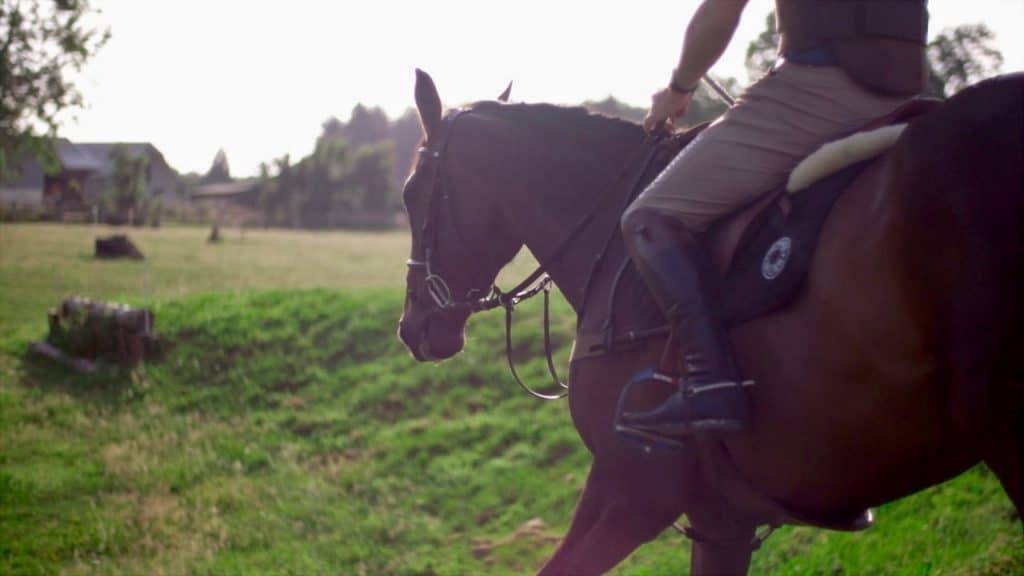How can you introduce your horse to wide obstacles ?
There are many wide fences in the cross-country phase in eventing, but they are more intimidating than difficult. I am personally used to them but I know that it can make you apprehensive. To get you and your horse used to wide jumps, you can try different jump set-ups at home.
Here is an example: first, set up a cross rail, then a vertical, and an oxer on a line.
Approach the cross rail in trot, then you have a short 6-meter stride before the vertical. After the vertical, you have a distance of 10 meters (so two strides) before the oxer. It is the oxer that will help you work on width.
The cross rail is useful for inexperienced horses because it helps them jump in the middle of the fence. You can also use ground lines and fillers in front of the jumps to teach your horse respect. Jump this line several times until it feels natural.
If you feel that your horse finds it difficult, reassure him by jumping the line again before increasing the width of the oxer.
Horses naturally have the strength to jump wide fences, but you have to present things to them in the right way to make it work. It’s important to capitalize on your horse’s confidence before widening the oxer. Once he’s gained confidence, you’ll be able to widen a bit. And to reward him, don’t forget to stroke him every time to give him confidence and reassure him.
Once you’ve made the oxer wider, you can try jumping the line again. One useful tip: if you feel that your horse is thinking too much, you can place a pole sitting diagonally on top of the oxer. This way, it will encourage him to jump wide because the pole will fill the gap in the middle of the oxer. Your horse will have a better understanding of the jump and not hesitate.
How can you reassure your horse ?
First of all, you have to reassure him and confirm what you want with your legs. But you don’t want your legs to make him rush and disturb his pace. You really need to give him enough autonomy to work out how to jump the line. But you need a leg that reassures and channels him in the approach phase to maintain him in a corridor going straight.
You also need to channel him between your hands. Your hand contact on the reins must not be too strong, it should be supple and really follow the motion of the neck above the jump.
To sum up, this line of jumps allows you to gradually increase the width without apprehension. The distances between the fences must be perfectly measured to correspond to the horse. Obviously, you have to adapt it to yours and his reaction (my example was: cross rail – 6 meters – vertical – 10 meters – oxer). The goal is to not have to intervene and not frighten the horse. Remember to lower your heels, to be in a good supple position, and to accompany your horse.
You must also be careful to keep your horse straight and make sure you keep him moving forward. Then, you just have to sit up straight, adapt your position when you approach the fence and focus on your line. There really isn’t much else to do besides that.
When you work with your horse, you can’t work on everything at once. If you’ve decided to work on wide jumps, then forget about improving the rest (the approach, adjustments…) and concentrate only on that.
Do you find jumping wide obstacles difficult ? What do you think of this email ? Leave me a comment here.

